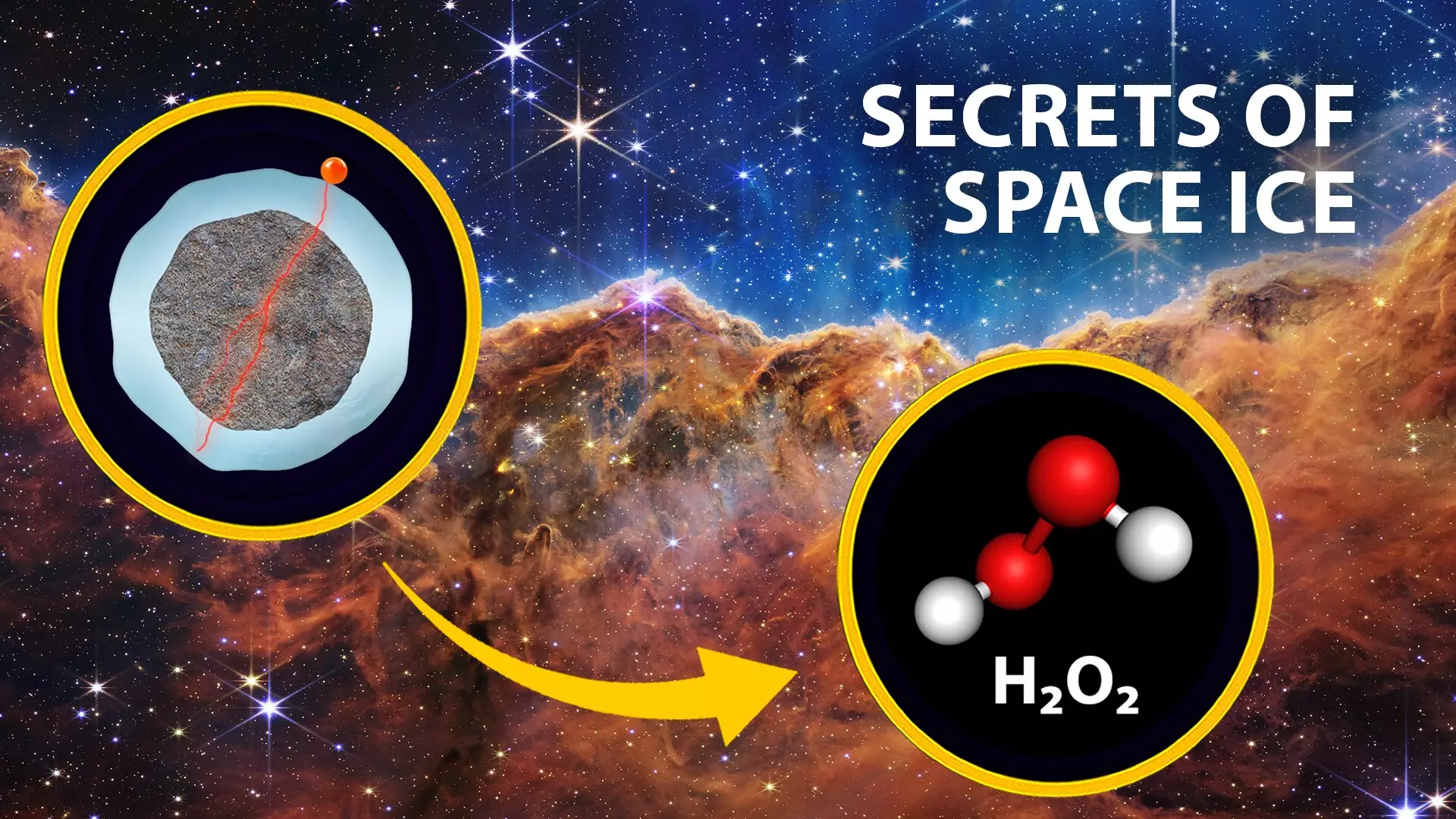The relentless quest to comprehend our existence and the origins of life on Earth has captivated scientific minds for centuries. Drawing inspiration from the poetic notion that we are made of stardust—as suggested in the songs of Crosby, Stills, Nash & Young—researchers are diving deep into the realm of cosmic chemistry. The unfolding narratives of how complex life began are intricately tied to the reactions occurring in the far reaches of space. Pioneering studies are focusing on the elemental building blocks that might pave the way for life’s inception, with a particular emphasis on low-energy electrons produced by cosmic radiation interacting with ice in space.
In pursuit of answers, a dedicated research team led by undergraduate student Kennedy Barnes at Wellesley College is pioneering investigations into the role of low-energy electrons in the cosmos. Their aim? To unveil the synthesis processes of prebiotic molecules—those foundational elements believed to give rise to life—through a meticulous analysis of cosmic ice. Barnes notes that previous examinations of extraterrestrial chemistry hinted at the synthesis of life’s precursors but lacked the depth of understanding regarding the influences of low-energy electrons versus photons. According to Barnes, early hypotheses suggested that both entities could ignite similar chemical reactions, yet nuanced observations indicate a potentially striking disparity in their contributions.
Through rigorous calculations, the team has posited that electrons generated by cosmic rays outnumber the incoming photons significantly, thereby spotlighting electrons as key drivers in the synthesis of essential prebiotic molecules.
The implications of this research transcend the boundaries of space exploration. The insights gleaned from cosmic chemistry are reverberating in fields as diverse as medicine and environmental science. Barnes and her colleagues have directed their attention to the radiolysis of water, a critical chemical process where water molecules undergo decomposition due to radiation exposure. Their findings indicate that low-energy electrons can lead to the production of compounds such as hydrogen peroxide, notorious for its detrimental effects on stratospheric ozone and its roles as a reactive oxygen species in biological systems.
Barnes emphasizes that understanding these pathways can offer transformative advantages in medical treatments, particularly in cancer therapies that leverage high-energy radiation to target and eliminate malignant cells. The analogy presented by a biochemistry professor—that humans are fundamentally “bags of water”—highlights the relevance of this research in understanding how radiation affects DNA, a key molecule in all forms of life.
Additionally, there exist profound environmental applications. The low-energy electrons resulting from high-energy radiation processes can catalyze reactions pivotal in the degradation of hazardous materials in wastewater. Ultimately, this duality of research impacts not only our understanding of life’s origins but also contributes to contemporary challenges facing humans today.
A Laboratory Simulation of the Cosmos
At the core of this investigation lies a scientific strategy that mirrors the conditions of extraterrestrial environments. The team’s methodology employs an ultrahigh-vacuum chamber designed to emulate the icy expanse of space. Equipped with specialized instruments, including an electron gun generating low-energy electrons and a laser-driven plasma lamp producing low-energy photons, the researchers bombard nanoscale ice films, scrutinizing the resultant chemical reactions.
Not limited to a singular focus on submicron ice particles, the breadth of their inquiry extends to larger formations resembling the icy exterior of celestial bodies—like Jupiter’s moon Europa, which has been a source of interest for potential harboring of life. The insights harvested from this meticulous lab work support observational missions, such as NASA’s James Webb Space Telescope, providing a framework for deciphering data regarding prebiotic chemistry in space.
The significance of this research extends beyond personal laboratories. The team collaborates with international counterparts at the Laboratory for the Study of Radiation and Matter in Astrophysics and Atmospheres in France, sharing ideas and techniques that enhance the collective understanding of astrochemistry. Furthermore, the ongoing exploration of varying molecular compositions within ice films represents a frontier of possibility, as researchers seek to discover whether low-energy electrons can catalyze diverse prebiotic chemical reactions.
Barnes expresses excitement about the uncharted territories awaiting discovery, suggesting that the modernization of astrochemistry models to include low-energy electrons could catalyze new paradigms in our understanding of life’s origins.
The research led by Barnes and her team magnificently intertwines cosmic inquiry with earthly applications, embodying the spirit of exploration that seeks to unveil the mysteries of our universe. As we delve deeper into the alchemy of life and space, we stand on the precipice of monumental discoveries that could reshape our understanding of existence itself.


Leave a Reply